Laptop Mag Verdict
The Beyerdynamic Free Byrd delivers great sound and noise cancellation, though it relies too much on software for optimal performance.
Pros
- +
Highly effective ANC
- +
Satisfying sound and call quality
- +
Responsive touch controls
- +
Useful audio features
- +
Bluetooth 5.2 with Google Fast Pair
Cons
- -
Requires third-party support to achieve better sound
- -
Thick design
- -
Charging case has short battery life
- -
No Bluetooth multipoint or control customization
Why you can trust Laptop Mag
Those familiar with hi-fi sound know Beyerdynamic well. The German headphone manufacturer has nearly 100 years of experience in the audio space. With the release of their first-ever wireless earbuds, the Free Byrd, they aim to compete with the market’s best noise cancelling earbuds.
Price: $249
Colors: Black, Grey
Battery life (rated): 8 hours (ANC on); 11 hours (ANC off); 20 hours (charging case)
Connectivity: Bluetooth 5.2
Water resistance: Yes (IPX5)
Size: 1.6 x 2.6 x 1.18 inches (charging case)
Weight: 0.24 ounces (per bud); 2.1 ounces (charging case)
This model features powerful audio technologies such as 10mm drivers, Mimi Sound Personalization, and Qualcomm aptX Adaptive codec support, along with active noise cancellation (ANC) and Alexa integration. Only a handful of the rivals outperform its noise reduction. The sound quality is also compelling. However, the Free Byrd requires effort on the user’s end to tweak the soundstage to satisfaction, and the bulky design isn’t for everyone.
Read our full review of the Beyerdynamic Free Byrd to get the full breakdown.
Beyerdynamic Free Byrd review: Availability and price
You can purchase the Beyerdynamic Free Byrd for $249 directly from Beyerdynamic. It is sold in two colors: Black and Grey. Bundled with the purchase are a wireless charging case, USB-C charging cable, 5 pairs of different sized eartips, 3 pairs of different sized foam ear tips, and quick start guides in nine languages.
These buds share the same MSRP as the AirPods Pro and Sennheiser Momentum True Wireless 3. They also fall in between luxury must-haves like the $279 Sony WF-1000XM4 and mid-range gems like the $199 Sony LinkBuds S.
Be sure to bookmark our headphone deals page for the latest sales.
Beyerdynamic Free Byrd review: Design and comfort
Design-wise, the Free Byrd feels like a departure from the brand’s past creations. Missing is the retro aesthetic best displayed on their over-ear studio headphones, several of which feature eye-catching details like shiny accents and open grilles. The Free Byrd is minimalist and bulky, granted it does maintain a professional look that will appease musicians and engineers.
Sign up to receive The Snapshot, a free special dispatch from Laptop Mag, in your inbox.
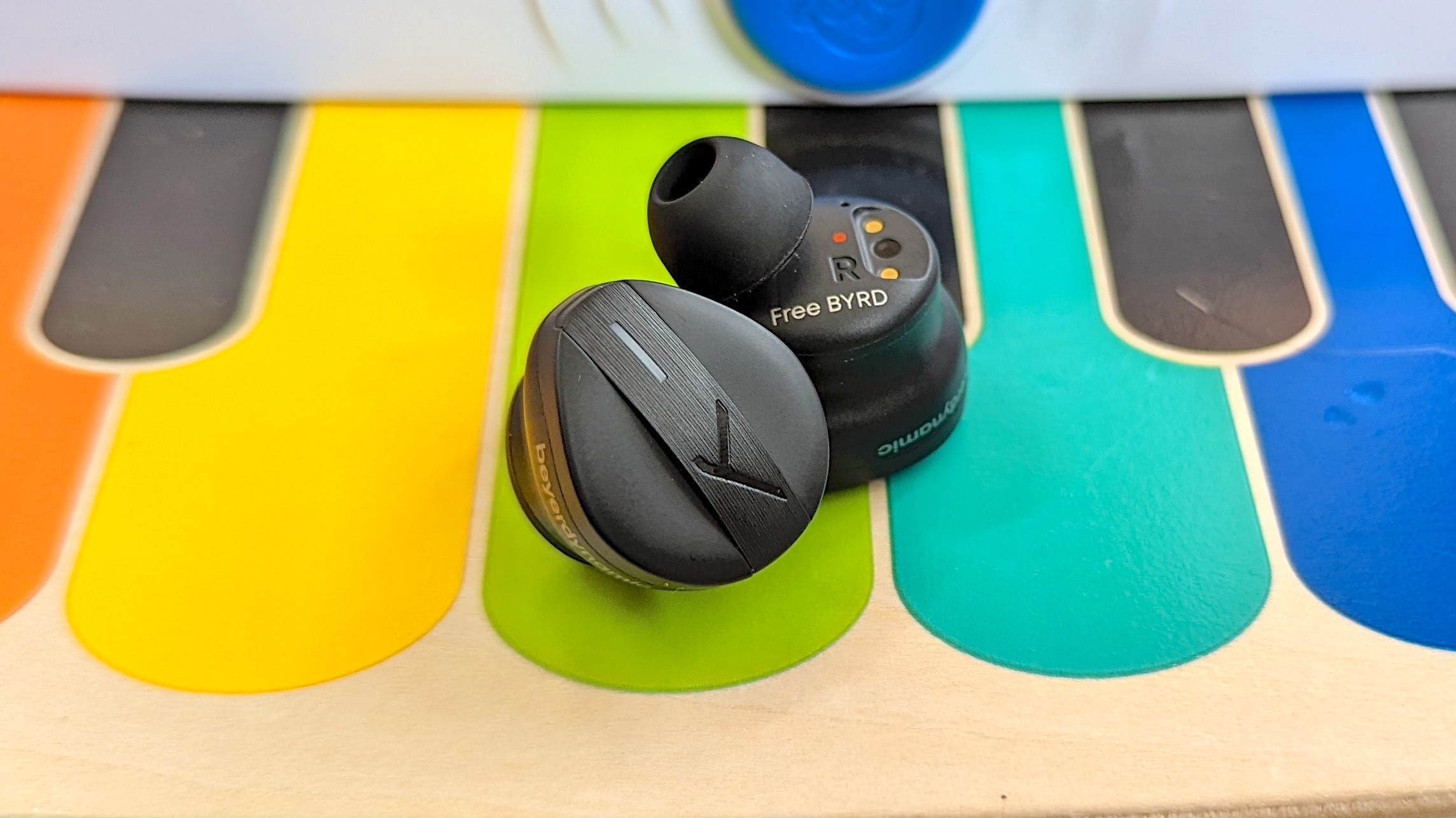
These buds are made entirely of plastic and have an IPX4 rating for sweat and splash resistance. You won’t have to worry about them shattering if dropped from a high distance because the build quality is strong. Beyerdynamic’s logo doubles as a touch panel and sits on a slim strip, along with an LED for pairing indication. That’s about it.

The charging case is slim, wide, and feels premium in hand. It’s built entirely from plastic and can survive hard spills onto the concrete. The magnets keep the lid tightly shut as well. I’m not sold on the airbrushed logo and text, but I’ve seen worse design jobs from other legacy brands.
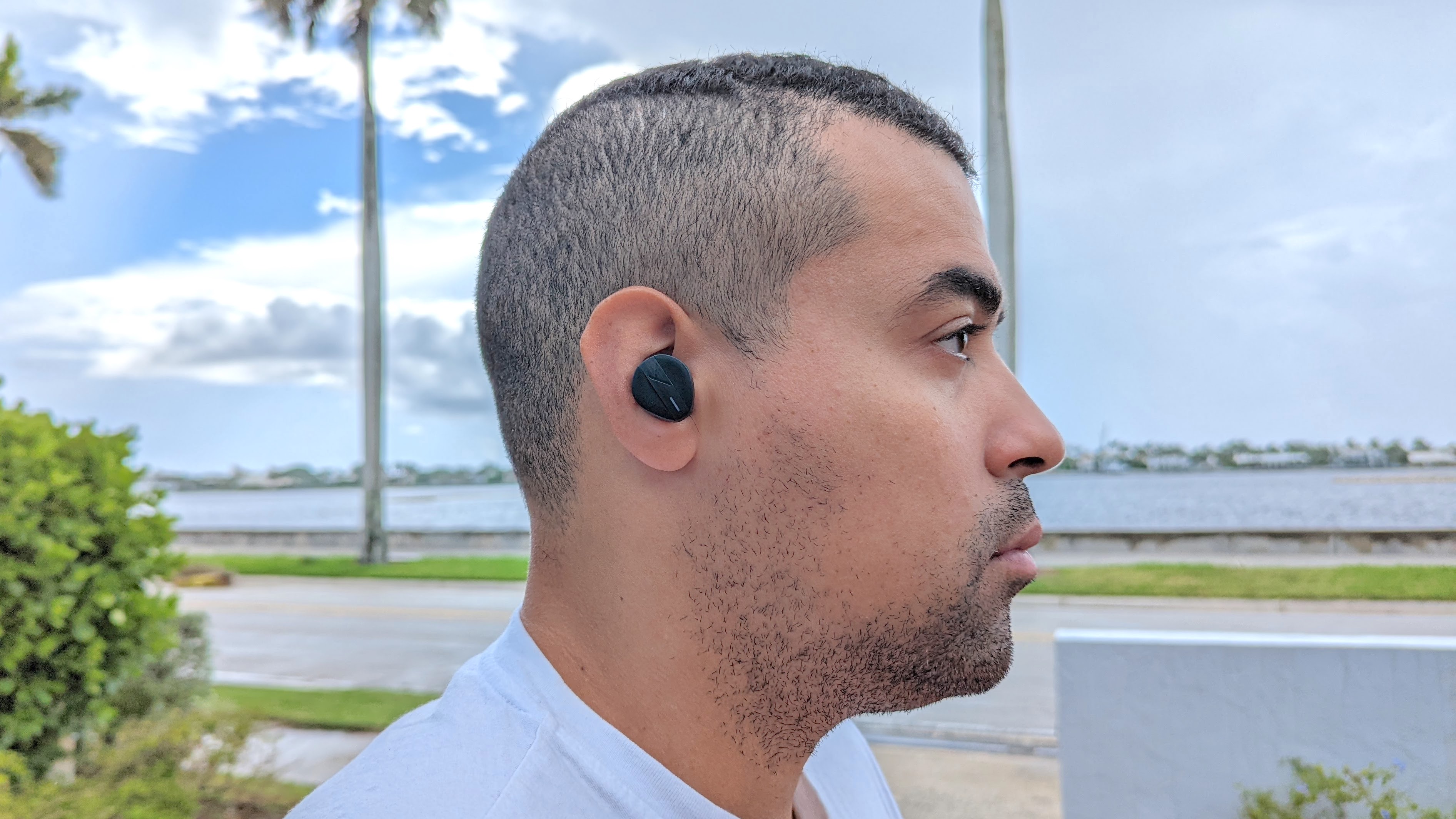
Comfort is a mixed bag. The angled sound port slides into the canal and the plethora of tips make it easy to personalize fit, especially the foam tips. It’s just that the cavity is too big and takes up a lot of ear real estate. Not to mention it presses against the concha, creating soreness after about two hours of wear.
Beyerdynamic Free Byrd review: Controls and digital assistant
Except for volume, the Free Byrd comes with a full suite of controls that can be activated through single, multi-tap, and tap-and-hold gestures. Tap accuracy is decent with the sensors recognizing intended commands more than half the time. There were moments when triple taps were mistaken for double taps. Beyerdynamic doesn’t offer a way to customize the controls, though they could add this feature in a future update.
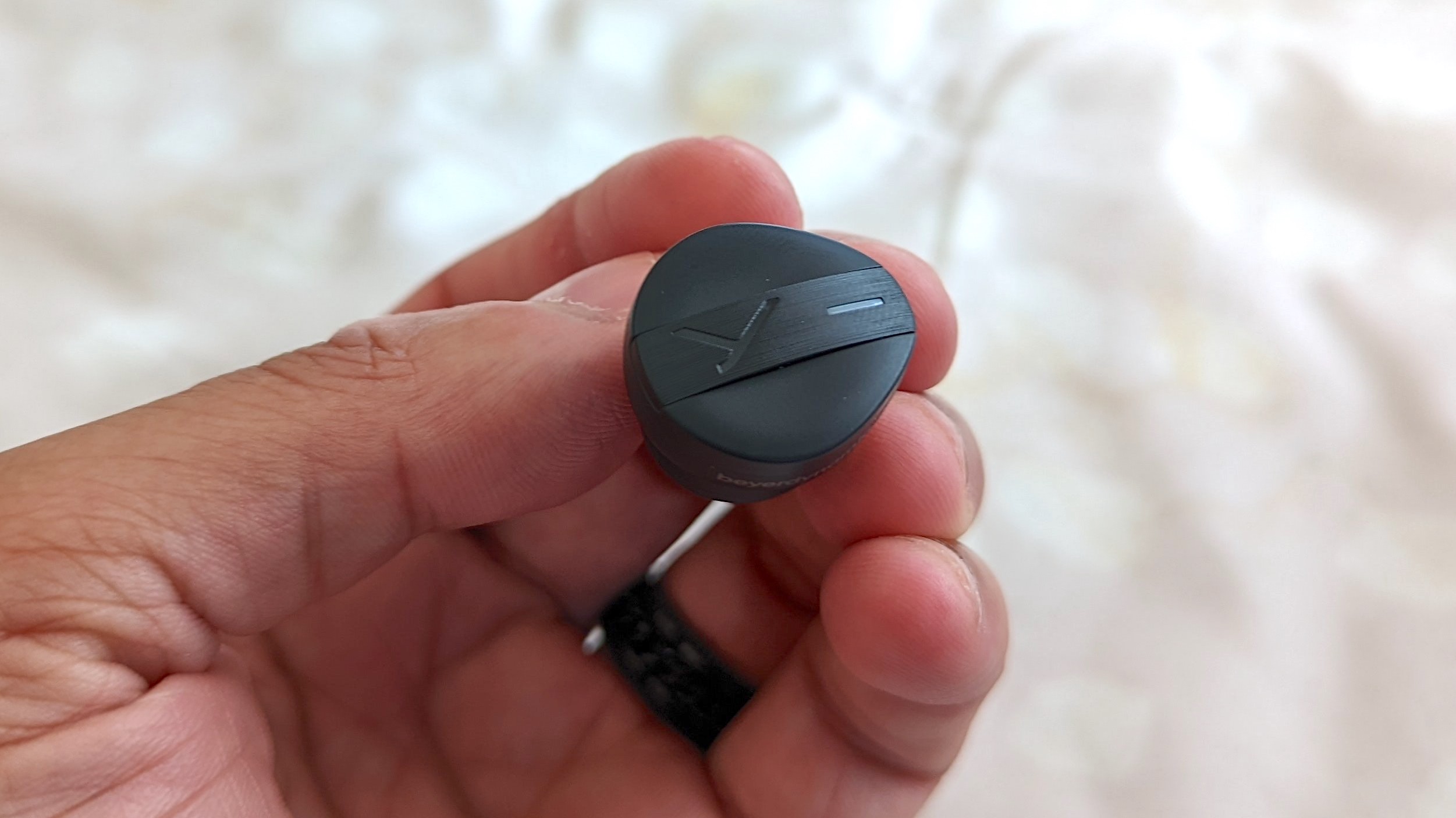
Wearing detection is available and suffers from latency issues. Removing the buds didn’t always activate auto-pause.
Google Assistant, Siri, and built-in Alexa are available for use. Beyerdynamic’s four-mic array is intuitive and registers voice commands with precision.
Beyerdynamic Free Byrd review: Audio quality
You’ll need to take a few steps to get the best sound quality out of these buds. Using the Mimi sound personalization feature is essential. It adapts sound to your hearing and creates a profile that can be customized. Taking the test is time-consuming, but well worth it.
My profile enhanced frequency range across the board, resulting in punchy lows, crisp mids, and detailed highs. It’s also nice that you can tweak the profile through two sound settings – Softer and Richer – or use a slider to determine how intense you want modifications to sound. I recommend keeping it at 100% and on standard setting (Recommended).
The detuned piano at the start of Run the Jewels “Ooh La La” sounded sharp. Following suit were the emphatic bass drums and snares, which created a vibrant and high-energy soundscape that would tickle any fitness buff’s ear. El-P’s production is thumpy and distortion-heavy, yet the Free Byrd handled it with finesse. Switching to Softer slightly reduced bass, but the drums still knocked, and Richer made the mids more prominent.

Elton John’s “Rocket Man” was a serenading listen filled with crisp vocals and pleasant harmonies. Jazz performances like the Dave Holland Quartet’s “Conference of the Birds” also reproduced lows and highs exceptionally well; the double bass was everlasting, and the tinging cymbals sounded pristine.
The other option for sound personalization is Beyerdynamic’s Equalizer with 8 different presets: Original (the default), Bass Boost, Brilliance, Speech, Smooth Treble, V-Shape, and Warm. These did little to improve sound in standard mode. However, some were excellent when paired with my Mimi profile. V-Shape elevated bass and treble superbly, while Speech increased vocal clarity on ballads and Brilliance emphasized the highs on instrumental recordings.
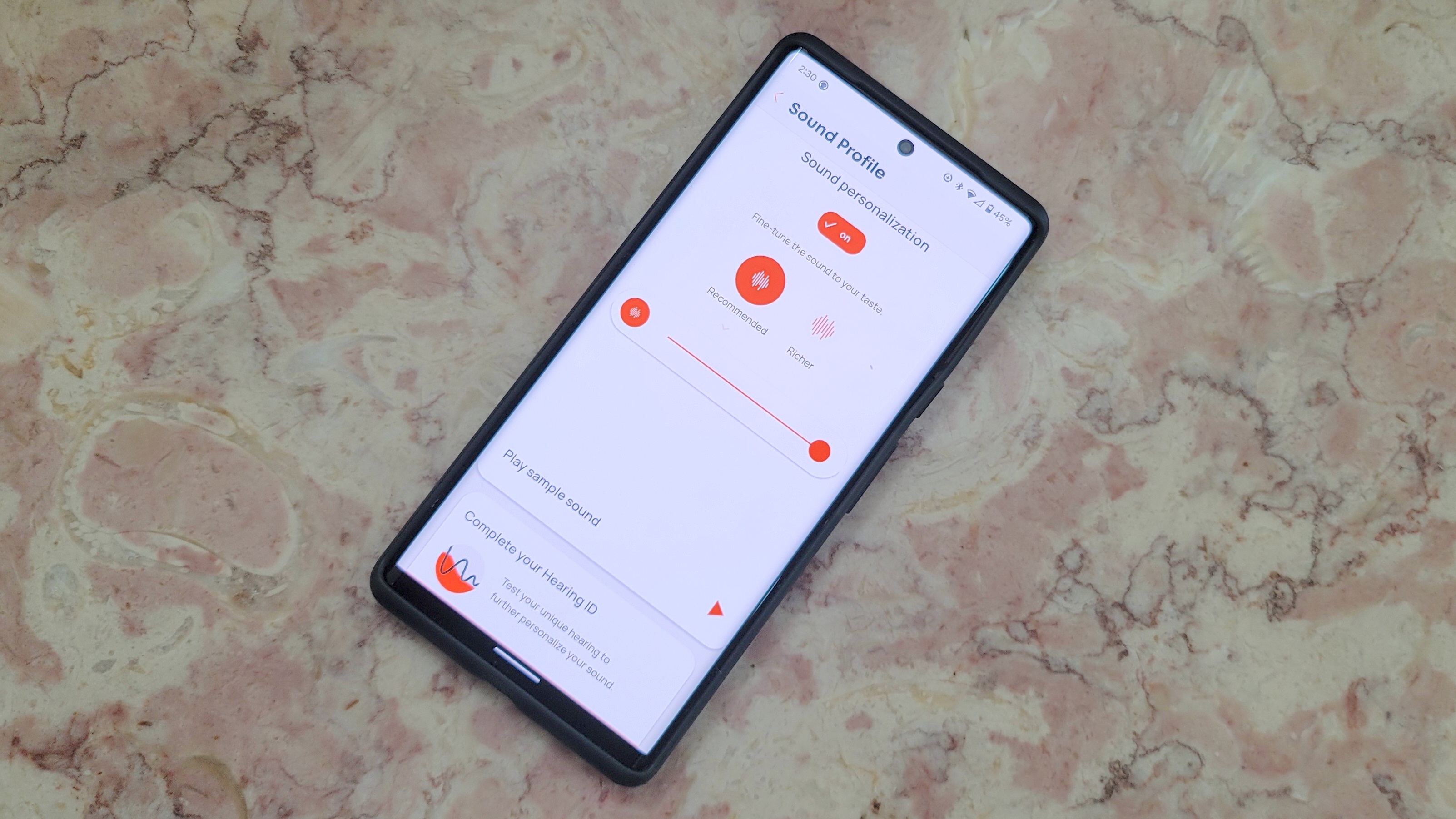
Beyerdynamic threw in a Low Latency mode that’s supposed to improve audio synchronization when playing mobile games. Putting it to the test, I played a few levels of Super Mario Run and Modern Ops and noticed a minor boost in quality. Sound effects like foot taps, tunnel warping, and gun fire were delivered more accurately.
Listening with ANC on increases the low end, which can be beneficial for some songs, but not all. The reverberation on hip-hop songs with boom-filled production came off too aggressive. AptX Adaptive delivered low-bit rate transmission and hi-res audio, plus AAC performed well on iOS/macOS devices.
Sound insulation was fine. The memory foam tips created a tight seal that kept sound from leaking out.
Beyerdynamic Free Byrd review: Active noise cancellation
Beyerdynamic’s hybrid noise-cancelling technology is terrific at reducing external sounds across the frequency spectrum, especially high frequencies, which only a few models can do. I wouldn’t place the Free Byrd above the Bose QuietComfort Earbuds or Sony WF-1000XM4, but it still ranks high in the true wireless ANC category.
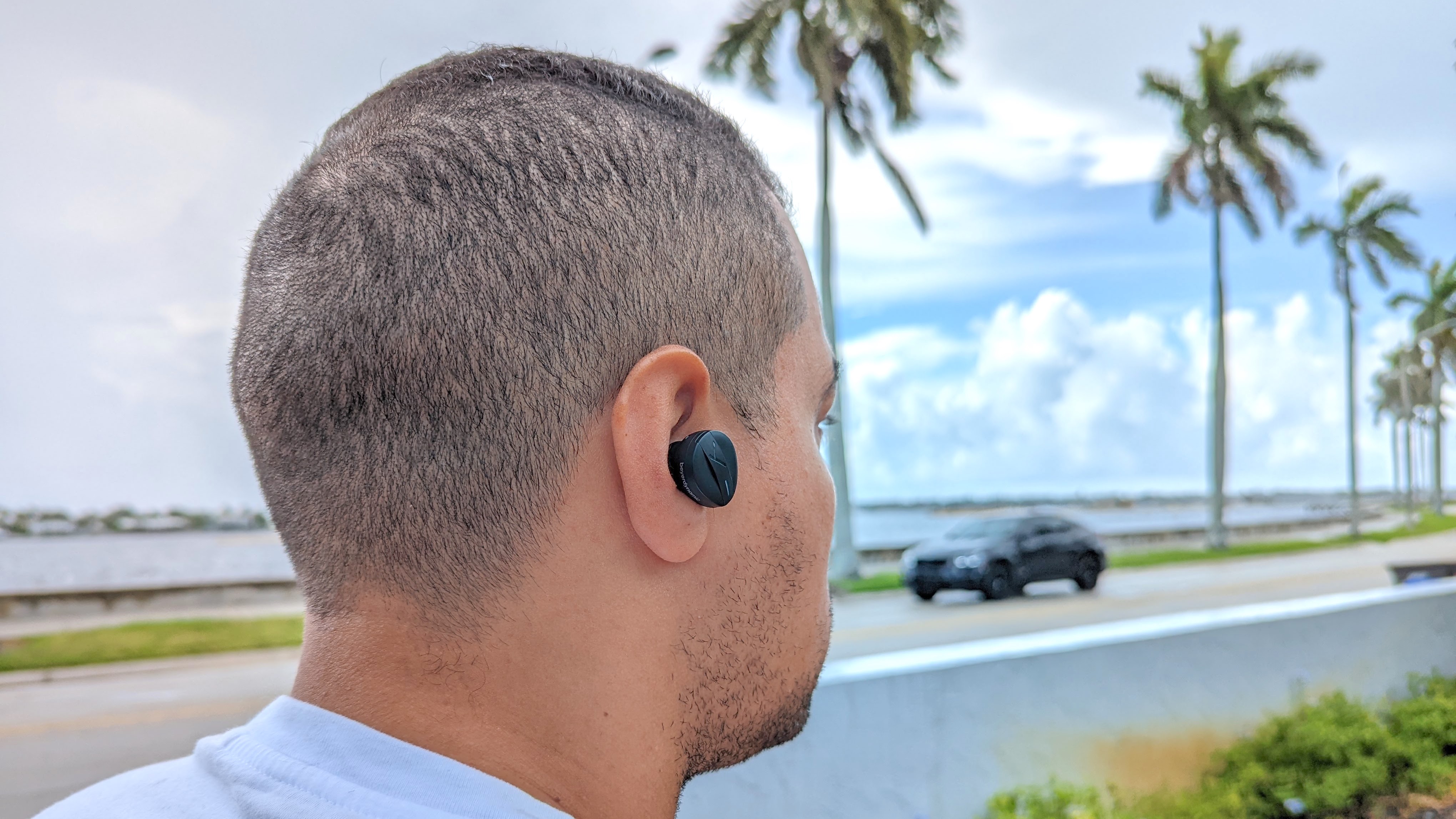
Using the buds indoors provided a quiet backdrop during workhours. Common distractions like deliveries, family chatter, TVs, and my toddler’s electronic toys didn’t break my concentration. Rumbling sounds from the laundry room were silenced. What surprised me most was how well the feature reduced my boy’s cries. He gets loud and whiny before a nap, so it was blissful to barely hear him while my wife was putting him down. Other strident noises like sirens and whistles were audible, but neither were bothersome when listening to music.
Transparent mode was effective for increasing my awareness of surroundings. I could hear airplanes flying over the house, cars coming from up the block, and pedestrians speaking into their AirPods, though the latter sounded muffled. I was worried that vocals wouldn’t come through clearly when speaking to my wife in proximity, but the quality was great and allowed me to hold a full conversation without taking off the buds.
Beyerdynamic Free Byrd review: App and special features
The MIY app has been updated with features that improve the user experience, several of which have been discussed. These include ANC, EQ, Low Latency, and Mimi Sound Personalization with the Sound Profile slider. Everything else is lackluster.
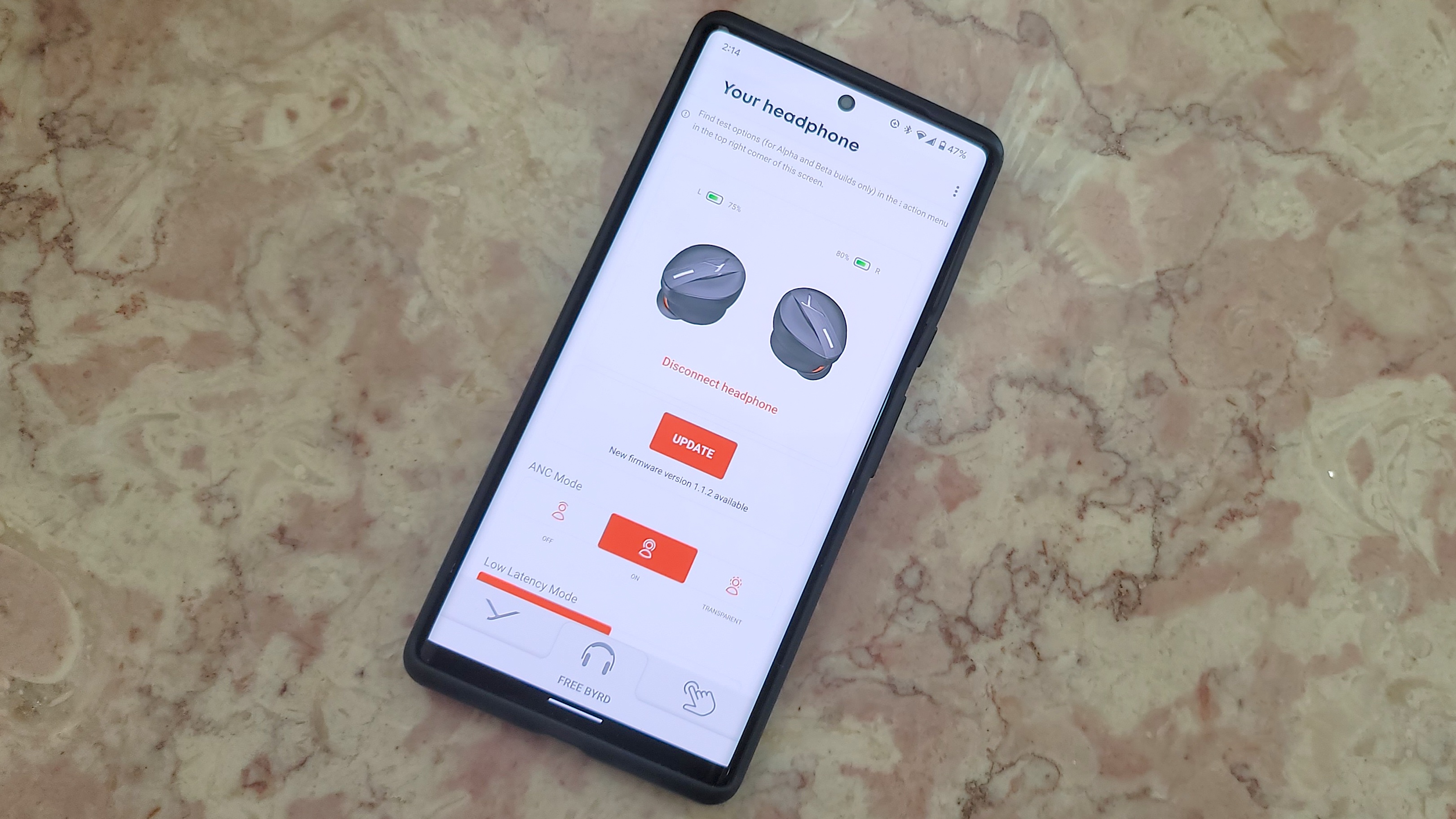
Beyerdynamic thought it would be fun to display each bud’s performance statistics, so they added a section at the bottom of the app displaying the numbers. The beta version of MIY let you see more intricate stats like the number of factory resets and how many times you trigger the play/pause or volume commands. The standard version keeps it basic with just four fields: up time, playback time, phone time, and starts. Nothing too exciting.
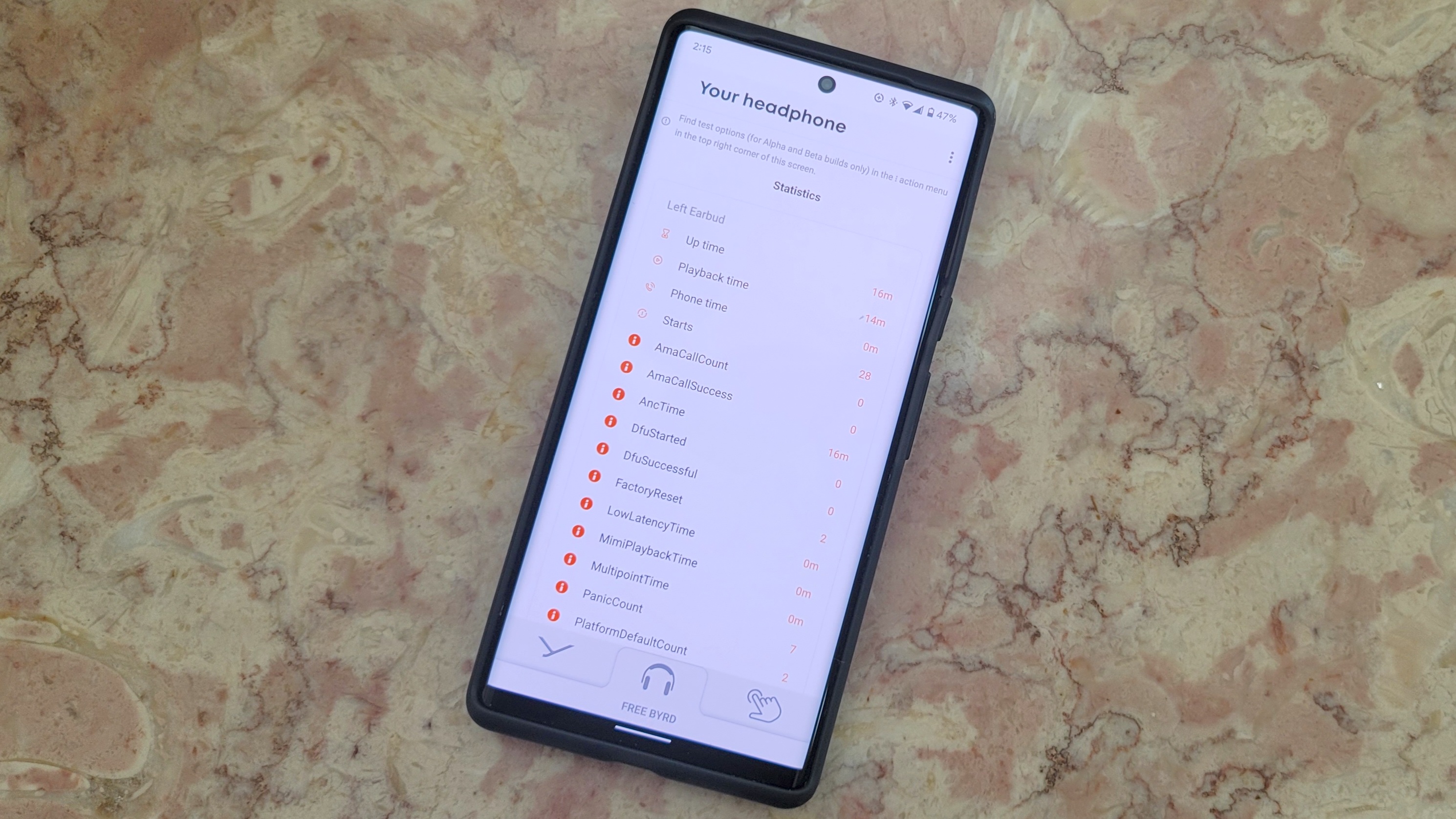
Rounding out the app are battery level indicators for the buds, firmware updates, and visual guides. Other models in the same price range have more app features like a soundscape mode or Find My Buds function.
Beyerdynamic Free Byrd review: Battery life and charging case
Beyerdynamic rates playtime at 8 hours with ANC on and 11 hours with ANC off. These are accurate playtimes. Depending how you use the buds, you should have enough juice for about 3 to 4 days of moderate use.
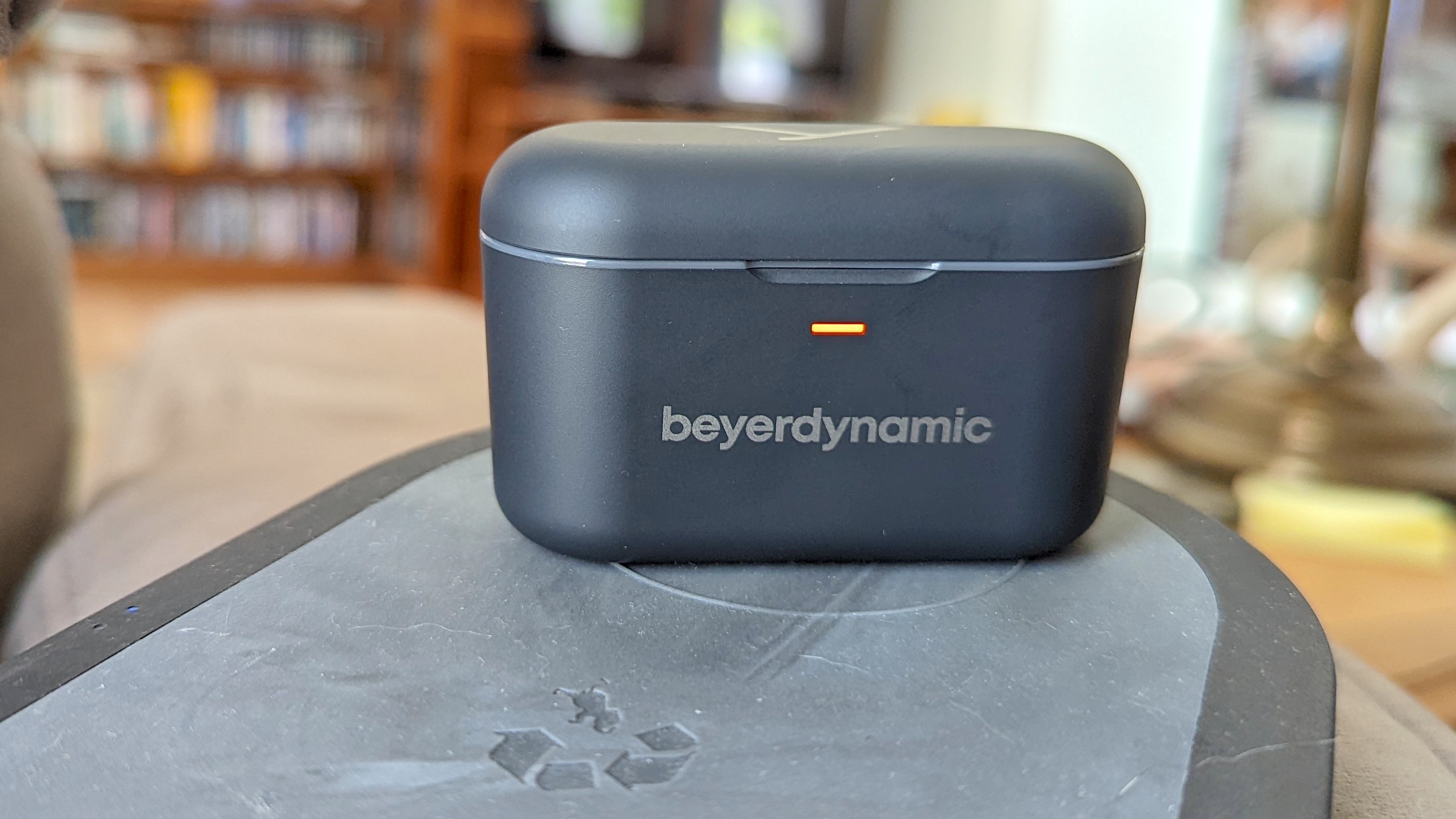
The wireless charging case holds up to 20 hours, which is below the industry average time set by the AirPods: 24 hours. A 10-minute quick charge equates to 70 minutes of use.
Beyerdynamic Free Byrd review: Call quality and connectivity
The Free Byrd is a notable calling headset. You’ll get crystal-clear results when speaking indoors. Outside was 50/50 due to the amount of noise each mic let in. In mildly transparent settings like my backyard, small noises like bird chirps and chatter didn’t interfere with quality, though there was noticeable muffle. Louder environments had car horns, construction tools, and wind enter the conversation.

Bluetooth 5.2 operates flawlessly. Expect lengthy range (up to 60 feet) when in open spaces. Pairing is instant on all devices, though one-tap Google Fast Pair expedites the process for Android users. Multipoint technology (pair to two devices at the same time) would have been greatly appreciated for the price.
Bottom line
The Beyerdynamic Free Byrd will appeal mostly to brand enthusiasts. It doesn’t do much to stand out from the competition, granted it provides excellent noise cancellation and striking sound, but only when employing the Mimi audio personalization tool. Similarly priced models like the Momentum True Wireless 3 and WF-1000XM4 can do both at the highest level, right out of the box.
Despite its imperfections and minimal distinction, the Free Byrd is a notable debut that hits its two biggest marks: ANC and sound. Whether that’s enough to justify the high price tag is debatable, but the buds would draw serious interest from audiophiles if dropped down to $200 or lower.
Alex Bracetti writes about all things related to audio at Laptop Mag. From insightful reviews of Sony earbuds to hands-on experience with the Beats Studio Pro, Alex covers everything you need to know in order to buy the best pair of headphones or earbuds. Alex has also written about speakers and audio apps. Outside of Laptop Mag, Alex's work has appeared in our sister site Tom's Guide.

